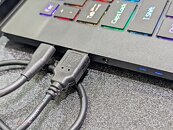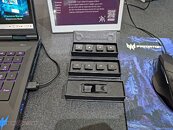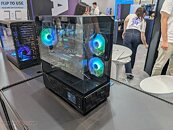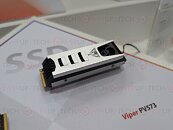
NVIDIA Plans 800 V Power Infrastructure to Drive 1 MW AI Racks
AI infrastructure buildout is pushing data center desings beyond the limits of conventional power delivery. Traditional in-rack 54 V DC distribution was designed for racks drawing tens of kilowatts and cannot scale to the megawatt requirements for next-generation AI facilities. At GTC and Computex 2025, NVIDIA introduced a comprehensive solution: an end-to-end 800-volt high-voltage DC (HVDC) infrastructure that will support 1-megawatt AI racks and beyond, with deployments planned to begin in 2027. Cooling and cabling already place immense strain on rack designs. NVIDIA's current GB200 and GB300 NVL72 systems can draw up to 132 kW per rack—significantly more than the 50 to 80 kW that most data halls were built to handle. If rack power rises to the 700 kW to 1 MW range under a 54 V distribution, it would require roughly 64 U of chassis space devoted solely to copper busbars, which is almost the entire rack, and about 200 kg of copper per rack. For a 1 GW installation, that adds up to nearly half a million metric tons of copper.
NVIDIA's 800 V HVDC architecture eliminates multiple AC-to-DC and DC-to-DC conversion stages by consolidating them into a single grid-edge rectifier. From a 13.8 kV AC feed, power is converted directly to 800 V DC and then routed through row-level busways to each rack. Compact DC-DC modules in the rack step down the voltage for the GPUs. Fewer power supply units mean fewer fans, lower heat output, and a simpler electrical footprint. Beyond scalability, 800 V HVDC offers up to 5 percent gains in end-to-end efficiency and a 45 percent reduction in copper usage. This results in lower electricity costs and reduced infrastructure buildout costs. To drive industry adoption, NVIDIA has partnered with leaders across the power ecosystem. Silicon and power-electronics specialists such as Infineon, MPS, Navitas, ROHM, STMicroelectronics, and Texas Instruments are contributing components. System integrators, including Delta, Flex Power, Lead Wealth, LiteOn, and Megmeet, are developing power shelves. Data-center infrastructure companies Eaton, Schneider Electric, and Vert iv are standardizing protective devices at every boundary from the power room to the rack. Below you can compare the traditional rack system in the top to the newly proposed variation in the middle and the bottom part of the image. Thanks to HardwareLuxx, we can even see how it looks in reality.
NVIDIA's 800 V HVDC architecture eliminates multiple AC-to-DC and DC-to-DC conversion stages by consolidating them into a single grid-edge rectifier. From a 13.8 kV AC feed, power is converted directly to 800 V DC and then routed through row-level busways to each rack. Compact DC-DC modules in the rack step down the voltage for the GPUs. Fewer power supply units mean fewer fans, lower heat output, and a simpler electrical footprint. Beyond scalability, 800 V HVDC offers up to 5 percent gains in end-to-end efficiency and a 45 percent reduction in copper usage. This results in lower electricity costs and reduced infrastructure buildout costs. To drive industry adoption, NVIDIA has partnered with leaders across the power ecosystem. Silicon and power-electronics specialists such as Infineon, MPS, Navitas, ROHM, STMicroelectronics, and Texas Instruments are contributing components. System integrators, including Delta, Flex Power, Lead Wealth, LiteOn, and Megmeet, are developing power shelves. Data-center infrastructure companies Eaton, Schneider Electric, and Vert iv are standardizing protective devices at every boundary from the power room to the rack. Below you can compare the traditional rack system in the top to the newly proposed variation in the middle and the bottom part of the image. Thanks to HardwareLuxx, we can even see how it looks in reality.



















































































































